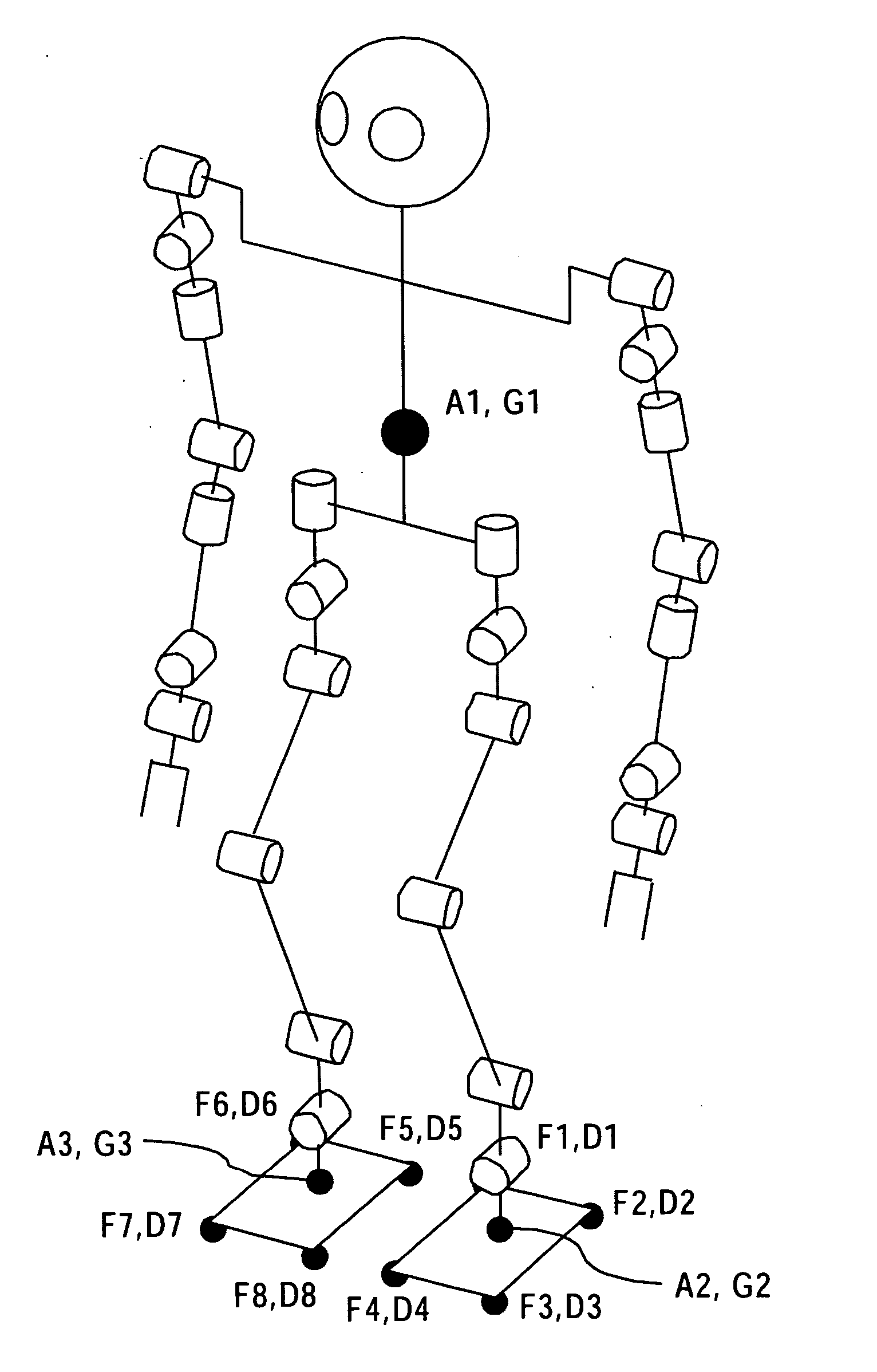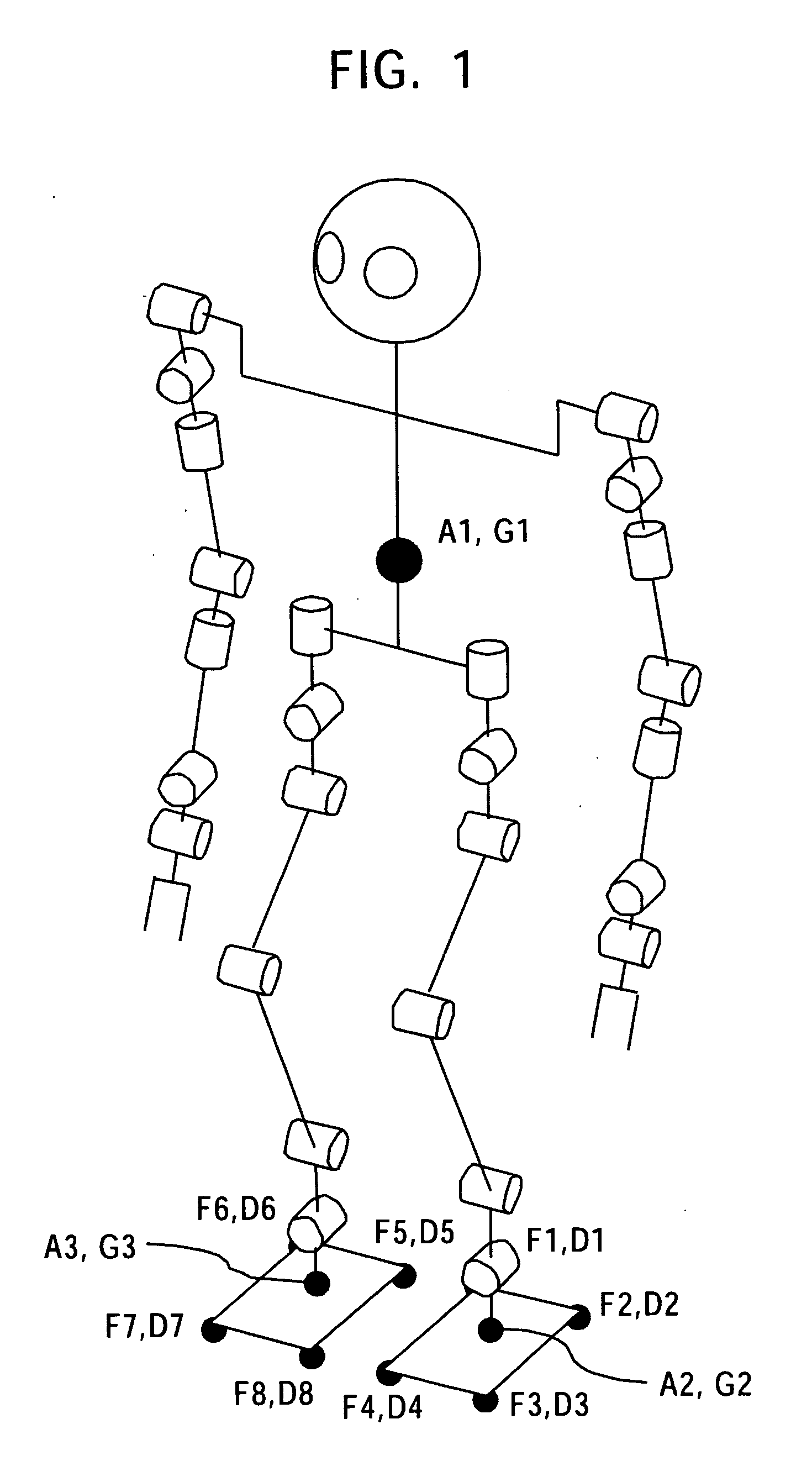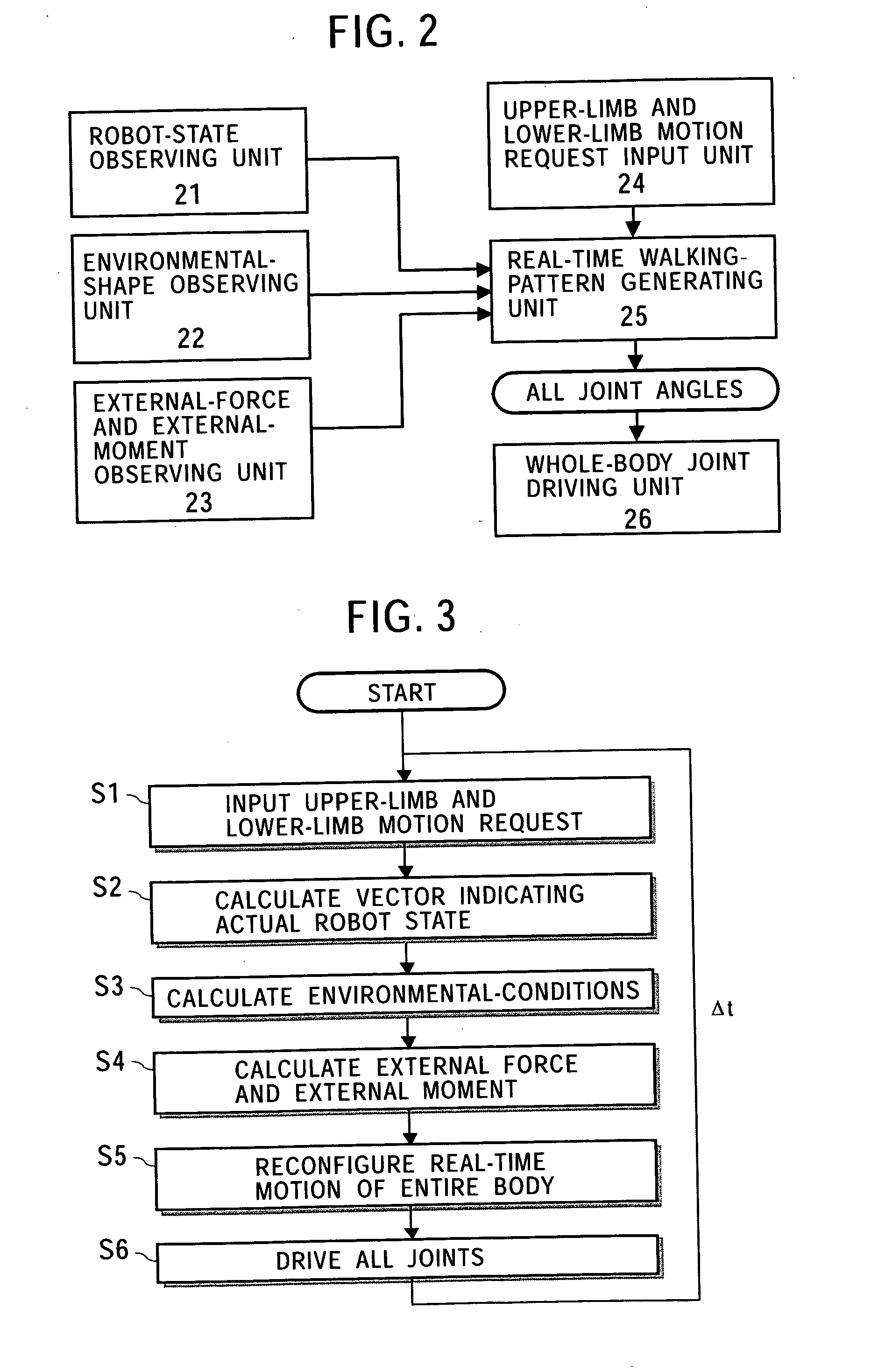Robot device and control method of robot device
a robot and control method technology, applied in the field of robot devices, can solve the problems of inability to meet various requests for changing locomotion, inability to erect the robot, and long time and labor
- Summary
- Abstract
- Description
- Claims
- Application Information
AI Technical Summary
Benefits of technology
Problems solved by technology
Method used
Image
Examples
Embodiment Construction
[0055] An embodiment of the present invention will be described in detail below with reference to the drawings.
[0056]FIG. 1 schematically shows the degree-of-freedom system in a legged mobile robot that carries out the present invention.
[0057] A robot shown in the figure is a humanoid robot having two legs and two arms. The robot has a body with four limbs attached thereto, and includes right and left arms each having seven degrees of freedom of a shoulder joint pitching axis, a shoulder joint rolling axis, an upper-arm yawing axis, an elbow joint pitching axis, a forearm yawing axis, a wrist rolling axis, and a wrist pitching axis, and right and left legs each having six degrees of freedom of a hip joint yawing axis, a hip joint rolling axis, a hip joint pitching axis, a knee pitching axis, an ankle pitching axis, and an ankle rolling axis.
[0058] The degrees of freedom of the joints are, in reality, realized by actuator motors. In this embodiment, small AC servo actuators in whi...
PUM
 Login to View More
Login to View More Abstract
Description
Claims
Application Information
 Login to View More
Login to View More - R&D
- Intellectual Property
- Life Sciences
- Materials
- Tech Scout
- Unparalleled Data Quality
- Higher Quality Content
- 60% Fewer Hallucinations
Browse by: Latest US Patents, China's latest patents, Technical Efficacy Thesaurus, Application Domain, Technology Topic, Popular Technical Reports.
© 2025 PatSnap. All rights reserved.Legal|Privacy policy|Modern Slavery Act Transparency Statement|Sitemap|About US| Contact US: help@patsnap.com



